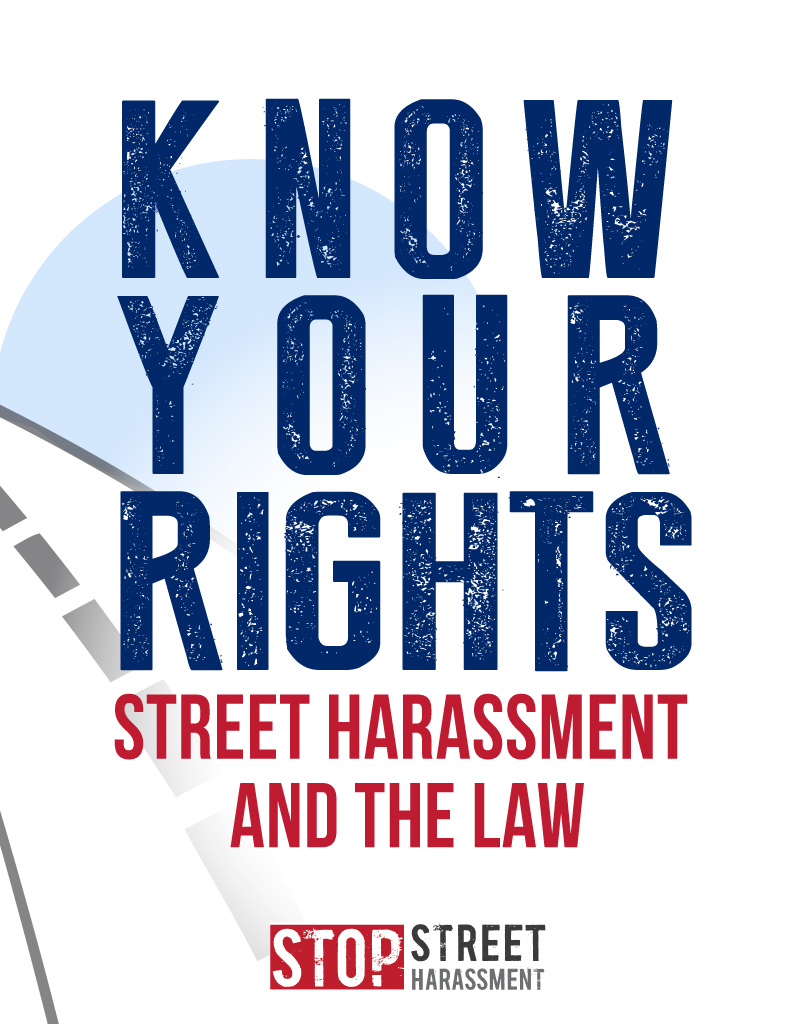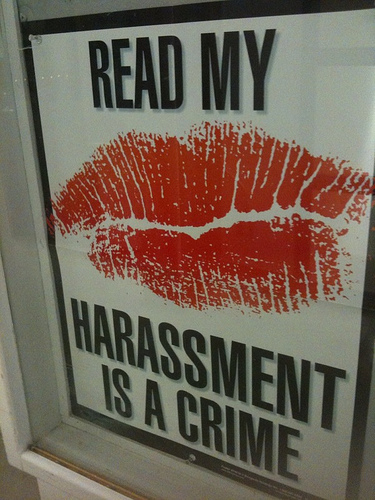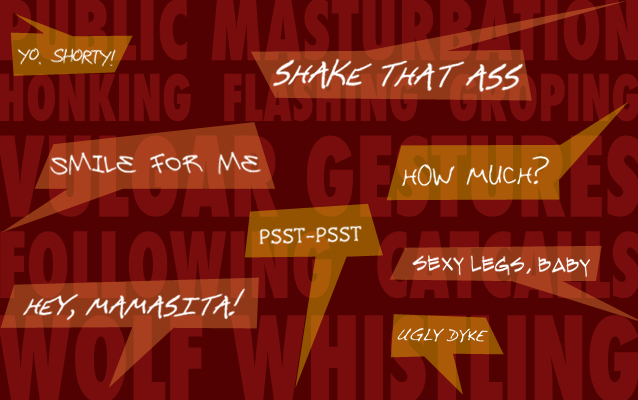 What Is Street Harassment?
What Is Street Harassment?
Leering, catcalls, obscene comments, repeated requests for your phone number or name after you’ve clearly said no, following, flashing, and groping. These are common forms of sexual harassment in public spaces initiated by strangers that millions of people worldwide experience, especially girls and women.
While the term commonly used to describe this social problem is “street harassment,” and is the term we use in this toolkit, the term is meant to encompass all public spaces. Also, it’s important to note that it refers only to interactions between strangers—of the opposite or same sex.
While it happens at a more frequent rate in cities, street harassment also is a problem in rural and suburban locations.
Street Harassment and the Law
 In general, street harassment is not specifically criminalized the way sexual harassment in schools and the workplace is, despite its prevalence and the negative effects it has on harassed persons, especially women and LGBQT individuals.
In general, street harassment is not specifically criminalized the way sexual harassment in schools and the workplace is, despite its prevalence and the negative effects it has on harassed persons, especially women and LGBQT individuals.
Fortunately, however, many common street harassment behaviors are already illegal. In fact, since at least the late 1880s, some women have used these laws to report street harassers to the police.
If someone verbally harasses you, exposes him or herself to you, or gropes you, there is likely a law in your state that prohibits this inappropriate behavior. The Know Your Rights Toolkit explains what those laws are and how you can report street harassment using them.
The most important thing to know is that you always have the right to be safe from sexual harassment, violence, and sexual assault, of any kind, in every state. If you ever feel threatened or unsafe, you can call 911 immediately.
What’s in the Toolkit?
This toolkit primarily covers verbal harassment, unlawful photographs/video recordings, indecent exposure, following, and groping. Physical assault, sexual assault, and rape are also illegal, but they are not covered in this document because there are many other places that collect those laws and offer help to survivors of those crimes.
The toolkit introduction covers definitions of commonly used legal terms, why and when to report street harassment, what to do if police are the harassers, and how laws specifically apply to minors.
It also includes examples of success stories, a discussion of the “best” laws, and information about how to advocate for stronger laws to better address common forms of street harassment.
The largest portion of the toolkit is the states section. Each state, and Washington, D.C., has its own section, organized alphabetically. In each state section, you will find the name of the different crimes, links to the legal codes so you can learn more, a description of the elements of each crime, examples of how street harassment relates tp the crime, and the penalties a harasser might face.

